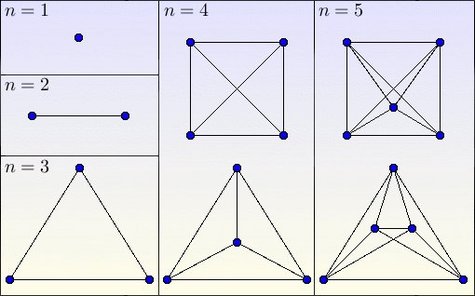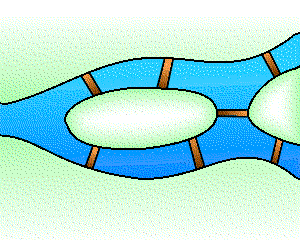-
 Coprocessor
Coprocessor
-
 Secret key
Secret key
-
 Antibiotic resistance
Antibiotic resistance
-
 Ultrafiltration
Ultrafiltration
-
 Dielectric
Dielectric
-
 Genetic polymorphism
Genetic polymorphism
-
 PET
PET
-
 Solstice
Solstice
-
 Avian influenza
Avian influenza
-
 Metre
Metre
-
 Disease
Disease
-
 Cervix
Cervix
-
 IANA
IANA
-
 CMOS
CMOS
-
 Sedna
Sedna
-
 Wavelength
Wavelength
-
 M 37
M 37
-
 Barium
Barium
-
 T Tauri
T Tauri
-
 Maritime pine
Maritime pine
-
 Main cryogenic stage
Main cryogenic stage
-
 Dyke
Dyke
-
 M86
M86
-
 Highlighting
Highlighting
-
 Solar wind
Solar wind
-
 Geodesics
Geodesics
-
 Mullerian mimicry
Mullerian mimicry
-
 Adenoma
Adenoma
-
 Earthquake
Earthquake
-
 Broadband network
Broadband network
Graph theory
A graph is a collection of elements in a system of inter-relations. Geometrically, these elements are represented by points (vertices) interconnected by the arcs of a curve (the edges). According to whether we choose to direct the edges or to give them a weight (a cost of passage); we speak of directed graphs or weighted graphs.

Complete graphs are those where all the vertices are connected pairwise.
Credits: S. Tummarello
The theory of graphs is concerned with their multiple properties: the existence of the shortest or cheapest routes, of particular cycles (Eulerian, Hamiltonian etc.), the number of intersections in the plane, colouring problems, etc.

The graph K3,3 is not planar: the edges intersect at at least one point in the plane.
Credits: S. Tummarello
Graph theory goes back to the problem of the bridges of Königsberg: is it possible to walk through this town via a circuit that passes once and only once over each of the seven bridges? In modern terms, the problem is to show the existence of a Eulerian cycle in the associated graph: In 1736, Euler showed that such a route did not exist.

The graph associated with the problem of the bridges of Königsberg.
Credits: S. Tummarello
Today, graphs have very many applications in modelling networks (roads, information, etc.). Moreover, graph theory has brought up algorithm problems (the travelling salesman problem, graph colouring, calculation of the largest sub-graph common to two graphs etc.), which are crucial in complexity theory (NP-complete problems, the P=NP conjecture).
Latest
Fill out my online form.



